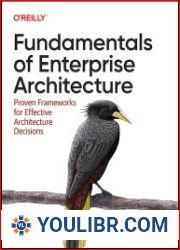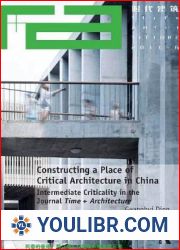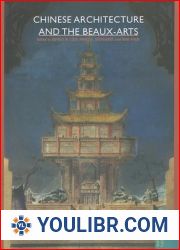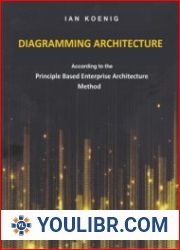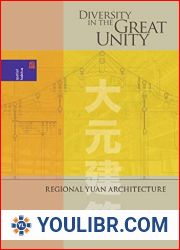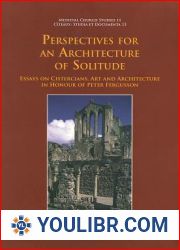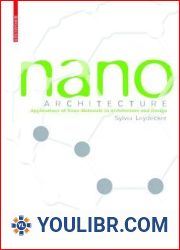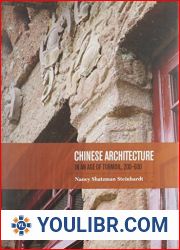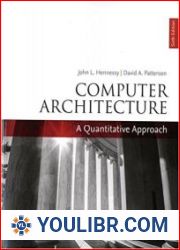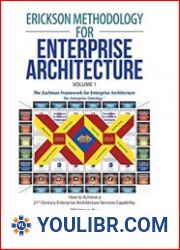
BOOKS - DESIGN AND ARCHITECTURE - Nationalism and Architecture

Nationalism and Architecture
Year: 2016
Format: PDF
File size: 19 MB
Language: ENG

Format: PDF
File size: 19 MB
Language: ENG

. The need to study and understand the process of technology evolution is crucial for humanity's survival, especially in a warring state. This can be achieved by developing a personal paradigm for perceiving the technological process of developing modern knowledge. In other words, it is essential to adapt our approaches to studying new technologies, change our understanding of technological terms, and present them in a simplified and accessible format. This book "Nationalism and Architecture" takes a unique approach to this task. Unlike regionalism in architecture, which has been widely discussed in recent years, nationalism in architecture has not received much attention. However, the most powerful collective representation of a nation is through its architecture, and how that architecture engages with the global arena by expressing, defining, and sometimes negating a sense of nation to participate in the international world. The book brings together case studies from Europe, North and South America, the Middle East, Africa, and Asia, providing a truly global exploration of the relationship between architecture and nationalism. The themes of regionalism and representation, ethnic and transnational expression, national identities, and histories of nationalist architecture are all covered. Additionally, the book examines the philosophies and sociological studies of nationalism, arguing that nationalism needs to be understood as a transnational notion. The interdisciplinary essays are coherently grouped into three thematic sections: Revisiting Nationalism, Interpreting Nationalism, and Questioning Nationalism.
. Необходимость изучения и понимания процесса эволюции технологий имеет решающее значение для выживания человечества, особенно в воюющем государстве. Этого можно добиться, выработав личностную парадигму восприятия технологического процесса развития современных знаний. Другими словами, важно адаптировать наши подходы к изучению новых технологий, изменить наше понимание технологических терминов и представить их в упрощенном и доступном формате. Эта книга «Национализм и архитектура» использует уникальный подход к этой задаче. В отличие от регионализма в архитектуре, который широко обсуждается в последние годы, национализму в архитектуре не уделяется много внимания. Однако самое сильное коллективное представление нации происходит благодаря ее архитектуре и тому, как эта архитектура взаимодействует с глобальной ареной, выражая, определяя, а иногда и сводя на нет чувство нации для участия в международном мире. Книга объединяет тематические исследования из Европы, Северной и Южной Америки, Ближнего Востока, Африки и Азии, предоставляя действительно глобальное исследование взаимосвязи между архитектурой и национализмом. Освещаются темы регионализма и представительства, этнической и транснациональной экспрессии, национальной идентичности и истории националистической архитектуры. Кроме того, в книге рассматриваются философии и социологические исследования национализма, утверждая, что национализм необходимо понимать как транснациональное понятие. Междисциплинарные эссе последовательно сгруппированы в три тематических раздела: «Пересмотр национализма», «Интерпретация национализма» и «Постановка под сомнение национализма».
. La nécessité d'étudier et de comprendre l'évolution des technologies est essentielle à la survie de l'humanité, en particulier dans un État en guerre. Cela peut être réalisé en développant un paradigme personnel de la perception du processus technologique du développement des connaissances modernes. En d'autres termes, il est important d'adapter nos approches à l'apprentissage des nouvelles technologies, de changer notre compréhension des termes technologiques et de les présenter dans un format simplifié et accessible. Ce livre « Nationalisme et Architecture » adopte une approche unique de cette tâche. Contrairement au régionalisme dans l'architecture, qui a été largement discuté ces dernières années, le nationalisme n'a pas reçu beaucoup d'attention dans l'architecture. Cependant, la plus forte représentation collective d'une nation vient de son architecture et de la façon dont cette architecture interagit avec la scène mondiale, exprimant, définissant et parfois annulant le sens de la nation pour participer à la paix internationale. livre rassemble des études de cas d'Europe, d'Amérique du Nord et du Sud, du Moyen-Orient, d'Afrique et d'Asie, fournissant une étude véritablement globale de la relation entre architecture et nationalisme. s thèmes abordés sont le régionalisme et la représentation, l'expression ethnique et transnationale, l'identité nationale et l'histoire de l'architecture nationaliste. En outre, le livre traite des philosophies et des études sociologiques du nationalisme, affirmant que le nationalisme doit être compris comme un concept transnational. s essais interdisciplinaires sont successivement regroupés en trois sections thématiques : « Révision du nationalisme », « Interprétation du nationalisme » et « Questionnement du nationalisme ».
. La necesidad de estudiar y comprender el proceso de evolución de la tecnología es crucial para la supervivencia de la humanidad, especialmente en un Estado en guerra. Esto se puede lograr desarrollando un paradigma personal de percepción del proceso tecnológico del desarrollo del conocimiento moderno. En otras palabras, es importante adaptar nuestros enfoques al estudio de las nuevas tecnologías, cambiar nuestra comprensión de los términos tecnológicos y presentarlos en un formato simplificado y accesible. Este libro, «Nacionalismo y arquitectura», adopta un enfoque único en esta tarea. A diferencia del regionalismo en la arquitectura, que ha sido ampliamente discutido en los últimos , el nacionalismo no recibe mucha atención en la arquitectura. n embargo, la representación colectiva más fuerte de una nación se produce gracias a su arquitectura y a cómo esta arquitectura interactúa con el escenario global, expresando, definiendo y a veces anulando el sentido de nación para participar en el mundo internacional. libro reúne estudios de casos de , América, Oriente Medio, África y Asia, proporcionando un estudio verdaderamente global de la relación entre arquitectura y nacionalismo. Se destacan los temas de regionalismo y representación, expresión étnica y transnacional, identidad nacional e historia de la arquitectura nacionalista. Además, el libro aborda la filosofía y los estudios sociológicos del nacionalismo, argumentando que el nacionalismo debe entenderse como un concepto transnacional. ensayos interdisciplinarios se agrupan sucesivamente en tres secciones temáticas: «Revisión del nacionalismo», «Interpretación del nacionalismo» y «Puesta en duda del nacionalismo».
. A necessidade de estudar e compreender a evolução da tecnologia é essencial para a sobrevivência da humanidade, especialmente num Estado em guerra. Isso pode ser feito através da criação de um paradigma pessoal de percepção do processo tecnológico de desenvolvimento do conhecimento moderno. Em outras palavras, é importante adaptar nossas abordagens para o estudo de novas tecnologias, mudar nossa compreensão dos termos tecnológicos e apresentá-los em um formato simplificado e acessível. Este livro «Nacionalismo e arquitetura» usa uma abordagem única desta tarefa. Ao contrário do regionalismo na arquitetura, que tem sido amplamente discutido nos últimos anos, o nacionalismo na arquitetura não tem dado muita atenção. No entanto, a representação coletiva mais forte da nação decorre da sua arquitetura e da forma como essa arquitetura interage com a arena global, expressando, definindo e, às vezes, derrubando o sentido da nação para participar do mundo internacional. O livro reúne estudos de caso da , das Américas, do Oriente Médio, da África e da Ásia, fornecendo um estudo realmente global sobre a relação entre arquitetura e nacionalismo. São abordados os temas do regionalismo e da representação, da expressão étnica e transnacional, da identidade nacional e da história da arquitetura nacionalista. Além disso, o livro aborda a filosofia e a investigação sociológica do nacionalismo, afirmando que o nacionalismo deve ser entendido como um conceito transnacional. Os ensaios interdisciplinares foram consistentemente agrupados em três seções temáticas: «Revisão do nacionalismo», «Interpretação do nacionalismo» e «Produção em causa do nacionalismo».
. La necessità di studiare e comprendere l'evoluzione della tecnologia è fondamentale per la sopravvivenza dell'umanità, soprattutto in uno stato in guerra. Questo si ottiene sviluppando un paradigma personale della percezione del processo tecnologico dello sviluppo della conoscenza moderna. In altre parole, è importante adattare i nostri approcci allo studio delle nuove tecnologie, cambiare la nostra comprensione dei termini tecnologici e presentarli in un formato semplificato e accessibile. Questo libro «Nazionalismo e Architettura» ha un approccio unico a questa sfida. A differenza del regionalismo architettonico, che è stato ampiamente discusso negli ultimi anni, il nazionalismo dell'architettura non è molto concentrato. Ma la rappresentazione collettiva più forte della nazione deriva dalla sua architettura e dal modo in cui questa architettura interagisce con l'arena globale, esprimendo, definendo e talvolta distruggendo il senso della nazione per partecipare al mondo internazionale. Il libro riunisce studi di caso provenienti da , Nord e Sud America, Medio Oriente, Africa e Asia, fornendo una ricerca davvero globale sulla relazione tra architettura e nazionalismo. Vengono trattati i temi del regionalismo e della rappresentanza, dell'espressione etnica e transnazionale, dell'identità nazionale e della storia dell'architettura nazionalista. Inoltre, il libro affronta le filosofie e gli studi sociologici sul nazionalismo, sostenendo che il nazionalismo deve essere compreso come un concetto transnazionale. I saggi interdisciplinari sono raggruppati in tre sezioni tematiche: «Revisione del nazionalismo», «Interpretazione del nazionalismo» e «Messa in discussione del nazionalismo».
. Die Notwendigkeit, den Prozess der Technologieentwicklung zu studieren und zu verstehen, ist für das Überleben der Menschheit, insbesondere in einem kriegführenden Staat, von entscheidender Bedeutung. Dies kann erreicht werden, indem ein persönliches Paradigma für die Wahrnehmung des technologischen Prozesses der Entwicklung des modernen Wissens entwickelt wird. Mit anderen Worten, es ist wichtig, unsere Ansätze an das Studium neuer Technologien anzupassen, unser Verständnis von Technologiebegriffen zu ändern und sie in einem vereinfachten und zugänglichen Format zu präsentieren. Dieses Buch, Nationalismus und Architektur, verfolgt einen einzigartigen Ansatz für diese Aufgabe. Im Gegensatz zum Regionalismus in der Architektur, der in den letzten Jahren viel diskutiert wurde, wird dem Nationalismus in der Architektur nicht viel Aufmerksamkeit geschenkt. Die stärkste kollektive Repräsentation einer Nation beruht jedoch auf ihrer Architektur und der Art und Weise, wie diese Architektur mit der globalen Arena interagiert, um das Gefühl der Nation, an der internationalen Welt teilzunehmen, auszudrücken, zu definieren und manchmal zu negieren. Das Buch kombiniert Fallstudien aus , Nord- und Südamerika, dem Nahen Osten, Afrika und Asien und bietet eine wirklich globale Studie über die Beziehung zwischen Architektur und Nationalismus. Themen wie Regionalismus und Repräsentation, ethnischer und transnationaler Ausdruck, nationale Identität und die Geschichte nationalistischer Architektur werden beleuchtet. Darüber hinaus untersucht das Buch Philosophien und soziologische Studien des Nationalismus und argumentiert, dass Nationalismus als transnationales Konzept verstanden werden muss. Die interdisziplinären Essays sind sukzessive in drei Themenbereiche gegliedert: „Revision des Nationalismus“, „Interpretation des Nationalismus“ und „Infragestellung des Nationalismus“.
. Potrzeba badania i zrozumienia ewolucji technologii ma kluczowe znaczenie dla przetrwania ludzkości, zwłaszcza w stanie wojennym. Można to osiągnąć poprzez opracowanie osobistego paradygmatu postrzegania procesu technologicznego rozwoju nowoczesnej wiedzy. Innymi słowy, ważne jest, aby dostosować nasze podejścia do badania nowych technologii, zmienić nasze zrozumienie warunków technologicznych i przedstawić je w uproszczonym i dostępnym formacie. Ta książka, Nacjonalizm i architektura, przyjmuje unikalne podejście do zadania. W przeciwieństwie do regionalizmu w architekturze, który był szeroko omawiany w ostatnich latach, nacjonalizm w architekturze nie otrzymuje wiele uwagi. Jednak najsilniejsza zbiorowa reprezentacja narodu pochodzi z jego architektury i sposobu, w jaki architektura oddziałuje z światowym etapem, wyrażając, definiując i czasami negując poczucie udziału narodu w świecie międzynarodowym. Książka skupia studia przypadków z Europy, Ameryk, Bliskiego Wschodu, Afryki i Azji, zapewniając prawdziwie globalne badanie relacji między architekturą a nacjonalizmem. Tematyka obejmuje regionalizm i reprezentację, ekspresję etniczną i ponadnarodową, tożsamość narodową oraz historię architektury nacjonalistycznej. Ponadto książka bada filozofię i badania socjologiczne nacjonalizmu, argumentując, że nacjonalizm należy rozumieć jako pojęcie ponadnarodowe. Interdyscyplinarne eseje są pogrupowane kolejno w trzy sekcje tematyczne: „Rewizja nacjonalizmu”, „Interpretacja nacjonalizmu” i „Kwestionowanie nacjonalizmu”.
. הצורך ללמוד ולהבין את התפתחות הטכנולוגיה חיוני להישרדות האנושות, במיוחד במצב מלחמה. ניתן להשיג זאת על ידי פיתוח פרדיגמה אישית לתפיסה של התהליך הטכנולוגי של התפתחות הידע המודרני. במילים אחרות, חשוב להתאים את גישותינו לחקר טכנולוגיות חדשות, לשנות את הבנתנו במונחים טכנולוגיים ולהציגם בפורמט פשוט ונגיש. הספר הזה, לאומיות ואדריכלות, נוקט בגישה ייחודית למשימה. בניגוד לאירגונליזם באדריכלות, שנידון רבות בשנים האחרונות, הלאומיות באדריכלות אינה זוכה לתשומת לב רבה. עם זאת, הייצוג הקולקטיבי החזק ביותר של אומה נובע מהארכיטקטורה שלה ומהאופן שבו ארכיטקטורה מתקשרת עם הבמה הגלובלית, מבטאת, מגדירה ולפעמים שוללת את תחושת ההשתתפות של האומה בעולם הבינלאומי. הספר מאחד בין מחקרי מקרים מאירופה, אמריקה, המזרח התיכון, אפריקה ואסיה, ומספק מחקר גלובלי אמיתי על היחסים בין אדריכלות ולאומיות. נושאים העוסקים באזרחות ובייצוג, ביטוי אתני ואתני, זהות לאומית והיסטוריה של האדריכלות הלאומנית. בנוסף, הספר בוחן את הפילוסופיות והמחקרים הסוציולוגיים של הלאומיות, וטוען כי יש להבין את הלאומיות כתפיסה על-לאומית. מאמרים בין-תחומיים מקובצים באופן רציף לשלושה חלקים: ”Revisiting Nationalism',” Interpresentation Nationalism'ו- ”Question Nationalism”.''
. Teknolojinin evrimini inceleme ve anlama ihtiyacı, özellikle savaşan bir durumda, insanlığın hayatta kalması için çok önemlidir. Bu, modern bilginin gelişiminin teknolojik sürecinin algılanması için kişisel bir paradigma geliştirerek başarılabilir. Başka bir deyişle, yaklaşımlarımızı yeni teknolojilerin çalışmasına uyarlamak, teknolojik terimler hakkındaki anlayışımızı değiştirmek ve bunları basitleştirilmiş ve erişilebilir bir biçimde sunmak önemlidir. Bu kitap, Milliyetçilik ve Mimarlık, göreve benzersiz bir yaklaşım getiriyor. Son yıllarda çokça tartışılan mimaride bölgeselciliğin aksine, mimaride milliyetçilik çok fazla ilgi görmemektedir. Bununla birlikte, bir ulusun en güçlü kolektif temsili, mimarisinden ve mimarinin küresel sahneyle etkileşime girme biçiminden, ulusun uluslararası dünyaya katılım duygusunu ifade etmesinden, tanımlamasından ve bazen de olumsuzlamasından kaynaklanmaktadır. Kitap, Avrupa, Amerika, Orta Doğu, Afrika ve Asya'dan vaka incelemelerini bir araya getirerek mimarlık ve milliyetçilik arasındaki ilişkinin gerçekten küresel bir araştırmasını sağlıyor. Kapsanan konular arasında bölgeselcilik ve temsil, etnik ve ulusötesi ifade, ulusal kimlik ve milliyetçi mimarinin tarihi yer almaktadır. Buna ek olarak, kitap milliyetçiliğin felsefelerini ve sosyolojik çalışmalarını inceler ve milliyetçiliğin ulusötesi bir kavram olarak anlaşılması gerektiğini savunur. Disiplinlerarası denemeler sırayla üç tematik bölüme ayrılmıştır: "Milliyetçiliği Yeniden Gözden Geçirme", "Milliyetçiliği Yorumlama've" Milliyetçiliği Sorgulama ".
. إن الحاجة إلى دراسة وفهم تطور التكنولوجيا أمر بالغ الأهمية لبقاء البشرية، خاصة في حالة الحرب. ويمكن تحقيق ذلك بوضع نموذج شخصي لتصور العملية التكنولوجية لتطور المعرفة الحديثة. وبعبارة أخرى، من المهم تكييف مناهجنا مع دراسة التكنولوجيات الجديدة، وتغيير فهمنا للمصطلحات التكنولوجية وتقديمها في شكل مبسط ويمكن الوصول إليه. يتخذ هذا الكتاب، القومية والعمارة، نهجًا فريدًا لهذه المهمة. على عكس الإقليمية في الهندسة المعمارية، والتي نوقشت على نطاق واسع في السنوات الأخيرة، لا تحظى القومية في العمارة باهتمام كبير. ومع ذلك، فإن أقوى تمثيل جماعي للأمة يأتي من هيكلها والطريقة التي تتفاعل بها العمارة مع المسرح العالمي، وتعبر عن إحساس الأمة بالمشاركة في العالم الدولي وتحدده وأحيانًا تنكره. يجمع الكتاب دراسات حالة من أوروبا والأمريكتين والشرق الأوسط وأفريقيا وآسيا، مما يوفر استكشافًا عالميًا حقًا للعلاقة بين العمارة والقومية. تشمل المواضيع التي تمت تغطيتها الإقليمية والتمثيل، والتعبير العرقي وعبر الوطني، والهوية الوطنية، وتاريخ العمارة القومية. بالإضافة إلى ذلك، يبحث الكتاب في الفلسفات والدراسات الاجتماعية للقومية، بحجة أنه يجب فهم القومية على أنها مفهوم عبر وطني. تم تجميع المقالات متعددة التخصصات بالتتابع في ثلاثة أقسام موضوعية: «إعادة النظر في القومية» و «تفسير القومية» و «التشكيك في القومية».
.技術の進化を研究し理解する必要性は、特に戦争状態における人類の生存にとって重要です。これは、現代の知識の発展の技術的プロセスの認識のための個人的なパラダイムを開発することによって達成することができます。言い換えれば、新しい技術の研究に私たちのアプローチを適応させ、技術用語の理解を変え、それらを簡略化されたアクセス可能な形式で提示することが重要です。この本、ナショナリズムと建築は、課題に対するユニークなアプローチを取ります。近広く議論されている建築の地域主義とは異なり、建築におけるナショナリズムはあまり注目されていません。しかし、国家の最強の集団表現は、その建築と建築が世界の舞台とどのように相互作用し、国際社会への国家の参加感を表現し、定義し、時に否定することから来ている。本書は、ヨーロッパ、アメリカ、中東、アフリカ、アジアからのケーススタディを結集し、建築とナショナリズムの関係を真にグローバルに探求しています。テーマは地域主義と表現、民族的・多国籍的表現、国家的アイデンティティ、ナショナリスト建築の歴史などである。また、ナショナリズムの哲学や社会学的研究についても考察し、ナショナリズムは国境を越えた概念として理解されなければならないと論じている。学際的なエッセイは「、ナショナリズムの再訪」「、ナショナリズムの解釈」「、ナショナリズムの問題化」の3つのテーマに分けられている。
.研究和了解技術發展的必要性對於人類的生存至關重要,特別是在交戰國。這可以通過建立個人範式來理解現代知識發展的過程過程來實現。換句話說,重要的是調整我們的方法以學習新技術,改變我們對技術術語的理解,並以簡化和負擔得起的格式呈現。這本書《民族主義與建築》對這項任務采取了獨特的方法。與近來廣泛爭論的建築區域主義不同,建築中的民族主義沒有得到太多關註。但是,一個國家最強大的集體表現形式是由於其建築以及與全球舞臺互動的方式,表達,定義,有時甚至否定了國家參與國際和平的感覺。該書結合了歐洲,美洲,中東,非洲和亞洲的案例研究,對建築與民族主義之間的關系進行了真正的全球研究。重點介紹了區域主義和代表性,種族和跨國表達,民族認同以及民族主義建築的歷史。此外,該書審查了民族主義的哲學和社會學研究,認為民族主義必須被理解為跨國概念。跨學科論文始終分為三個主題部分:「民族主義的修訂」,「民族主義的解釋」和「對民族主義的質疑」。







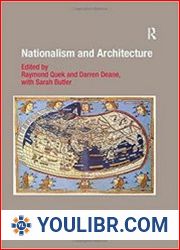
 49
49  1 TON
1 TON




